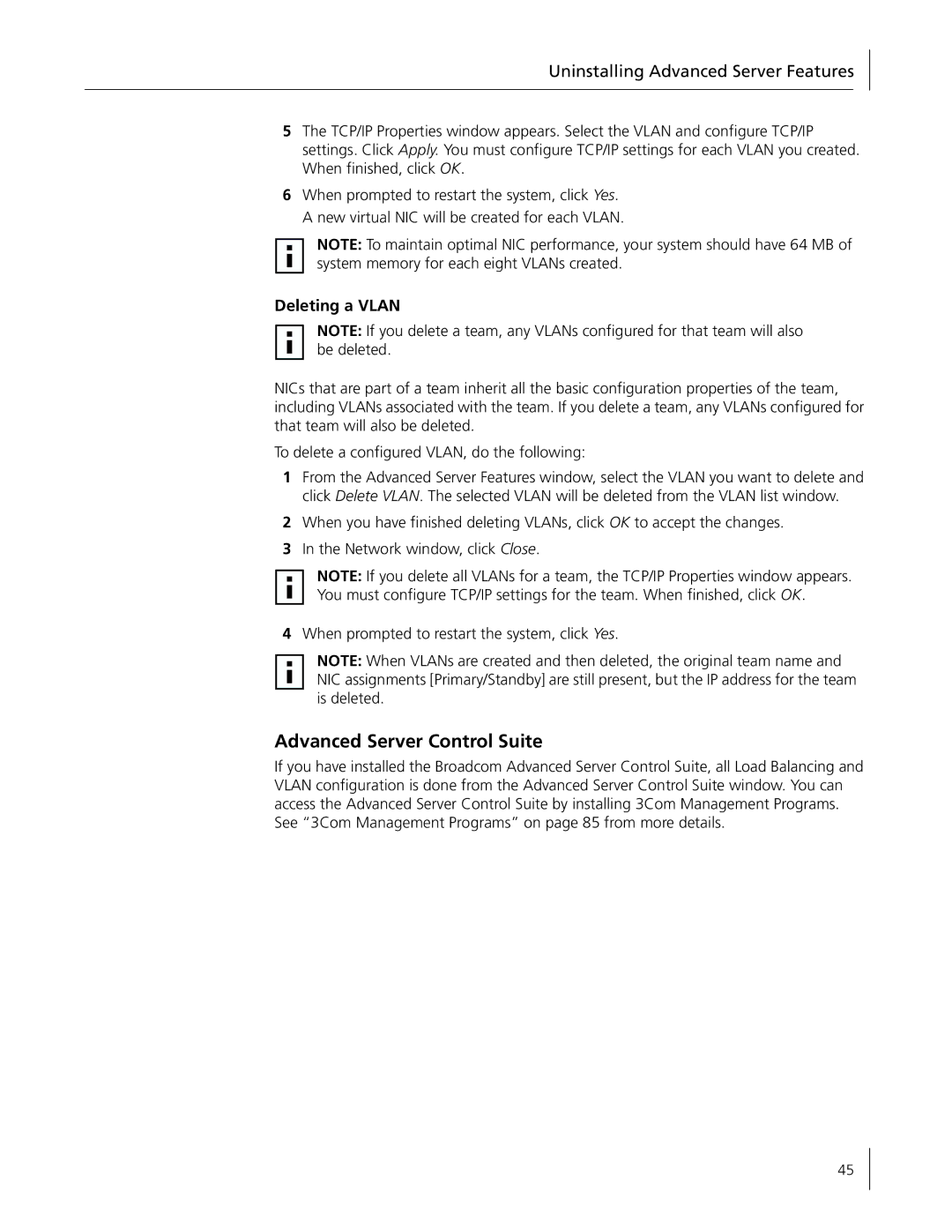
Uninstalling Advanced Server Features
5The TCP/IP Properties window appears. Select the VLAN and configure TCP/IP settings. Click Apply. You must configure TCP/IP settings for each VLAN you created. When finished, click OK.
6When prompted to restart the system, click Yes. A new virtual NIC will be created for each VLAN.
NOTE: To maintain optimal NIC performance, your system should have 64 MB of system memory for each eight VLANs created.
Deleting a VLAN
NOTE: If you delete a team, any VLANs configured for that team will also be deleted.
NICs that are part of a team inherit all the basic configuration properties of the team, including VLANs associated with the team. If you delete a team, any VLANs configured for that team will also be deleted.
To delete a configured VLAN, do the following:
1From the Advanced Server Features window, select the VLAN you want to delete and click Delete VLAN. The selected VLAN will be deleted from the VLAN list window.
2When you have finished deleting VLANs, click OK to accept the changes.
3In the Network window, click Close.
NOTE: If you delete all VLANs for a team, the TCP/IP Properties window appears. You must configure TCP/IP settings for the team. When finished, click OK.
4When prompted to restart the system, click Yes.
NOTE: When VLANs are created and then deleted, the original team name and NIC assignments [Primary/Standby] are still present, but the IP address for the team is deleted.
Advanced Server Control Suite
If you have installed the Broadcom Advanced Server Control Suite, all Load Balancing and VLAN configuration is done from the Advanced Server Control Suite window. You can access the Advanced Server Control Suite by installing 3Com Management Programs. See “3Com Management Programs” on page 85 from more details.
45
